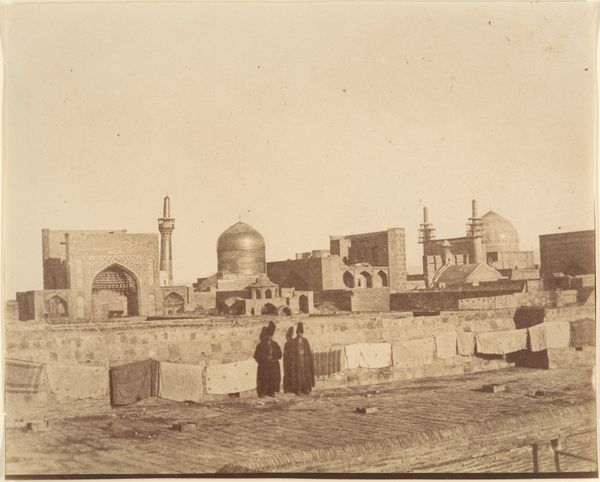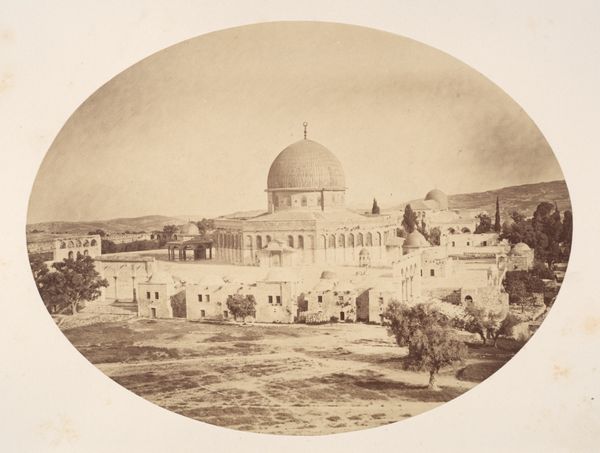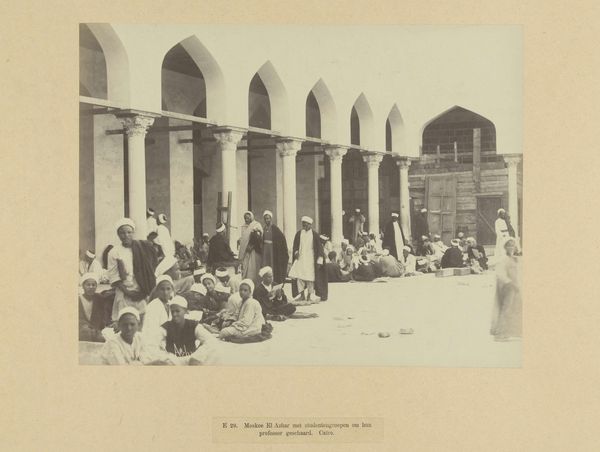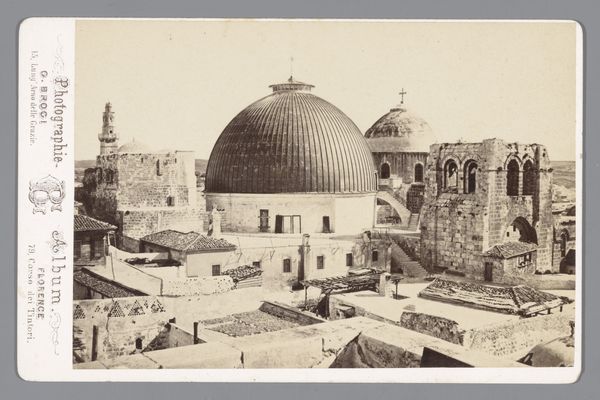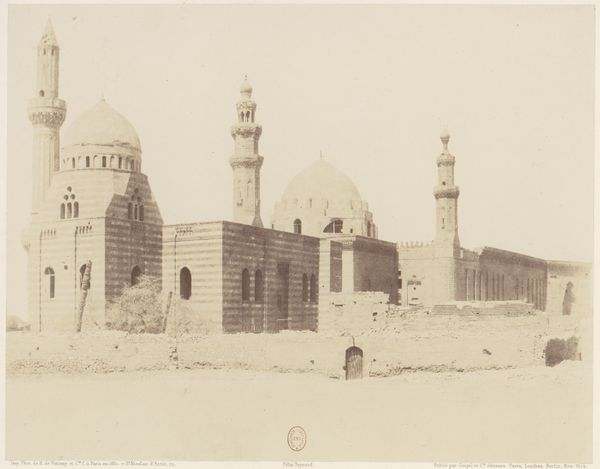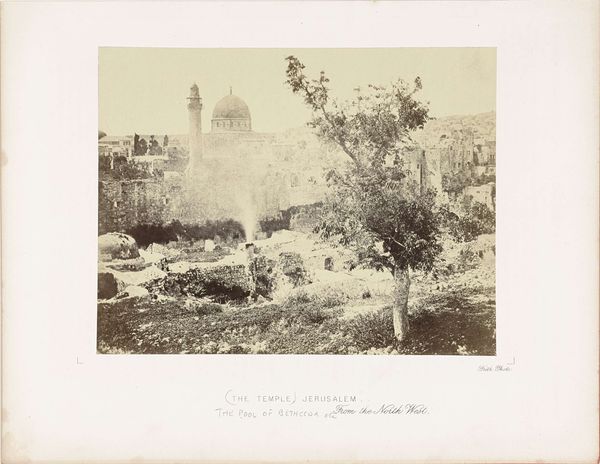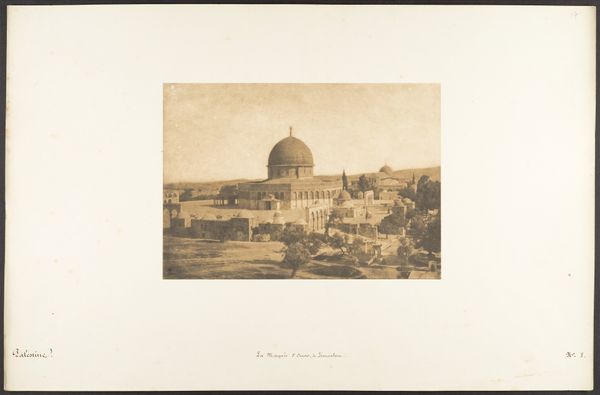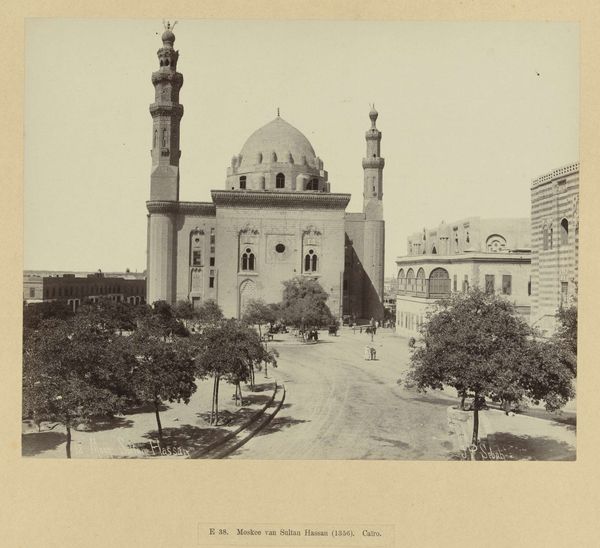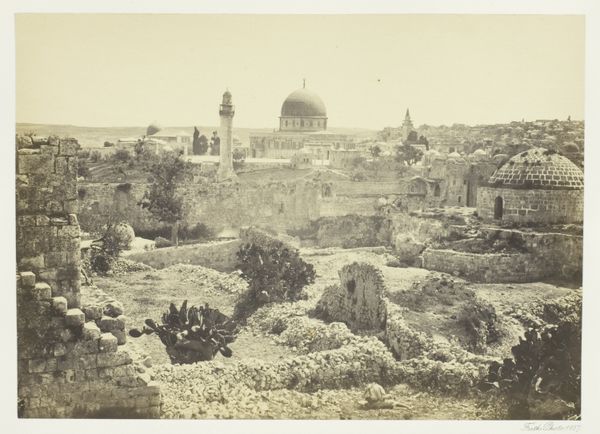
photography
#
landscape
#
photography
#
orientalism
#
islamic-art
Dimensions: height 222 mm, width 283 mm, height 469 mm, width 558 mm
Copyright: Rijks Museum: Open Domain
Curator: This is a photograph by Félix Bonfils, titled "Graves of the family of the prophet Mohammed, Damascus," dating from about 1867 to 1877. Editor: My first impression is one of austere grandeur. The repetitive forms of the headstones create a powerful visual rhythm, especially set against the solid domes in the background. The limited tonal range enhances the photograph’s mood—dignified, reflective, and strangely still. Curator: Indeed. The image operates on multiple levels structurally. The composition is split rather horizontally, from the foreground packed with tombstones leading the gaze back towards the lighter architectural structures. There's a powerful contrast in texture from ground level to skyline that makes for very successful semiotic encoding. Editor: Absolutely, and I'm immediately struck by the symbols used for funerary art, echoing across different cultures—the shapes, the inscriptions hinting at spiritual narratives, the delicate metalwork acting as markers of respect. This imagery resonates deeply. Note that caged cupola in the background—those sorts of forms symbolize for me how human remembrance becomes codified as collective cultural values and narratives. Curator: Bonfils, through his technical mastery, manages to bring out a specific visual culture and system from that perspective—it showcases an almost ethnographic perspective—while demonstrating at every level acute sensitivity. It’s not just documentary; there’s artful intentionality with tonal selection and framing. It feels incredibly precise. Editor: It succeeds because it prompts reflection on what we assign symbolic meaning to, and the continuity of symbols through diverse societies and cultural moments, while demonstrating an intercultural space. This piece functions as both historic testimony and deeply psychological art. The site takes on many cultural projections beyond death. Curator: Looking back, the tonal restraint works wonders as it subtly brings all elements of design into near equipoise without sacrificing thematic expressiveness and the structural framework it lays bare. Editor: Indeed. A valuable intersection of cultures recorded at an invaluable moment of colonial interaction captured for generations.
Comments
No comments
Be the first to comment and join the conversation on the ultimate creative platform.
